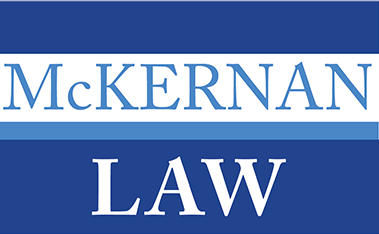ESTATE PLANNING FOR DIGITAL ASSETS – INTANGIBLE, BUT IMPORTANT:
As our society becomes more reliant on digital technologies, the world of estate planning faces new challenges. Many people today, whether they realize it or not, own substantial digital assets. Names, blogs, bitcoin, and non-fungible tokens (NFTs) are examples of digital assets that must be considered when creating an estate plan. If the proper authorizations are not in place, passwords, data encryption, criminal laws on "exceeding authorized access," and data privacy laws may prevent a decedent's family members from accessing their loved one's digital assets. It is more important than ever to have an up-to-date estate plan that complies with the law, expresses your intentions regarding all of your property, digital or not, and reduces emotional and financial burdens on loved ones after death. Digital property should not be overlooked.
The digital world is a popular destination. Facebook reported 1.96 billion daily users in the first quarter of 2022. Google reported over 15 billion daily active views across its properties in fiscal year 2021 (e.g., Google, Gmail, and YouTube). The United States has one of the highest rates of Internet use in the world, both in terms of total users and as a percentage of the population. Users of the internet accumulate digital property at an incredible rate by uploading photographs and videos, publishing written material, creating online profiles, creating subscriber accounts, and engaging in a variety of other activities.
According to a 2011 survey, U.S. consumers valued their digital assets, which were stored across multiple digital devices, at an average of $55,000 per person. While much digital property has sentimental value for individuals, some items, such as income-generating social media accounts, advertising revenue from websites, domain names, crypto currencies, and NFTs, can have enormous financial value. Furthermore, as more and more memorabilia is stored digitally, replacing outdated physical storage systems, there is a compelling reason to safeguard and manage digital property regardless of its monetary value. Advances in technology make fiduciary access to digital assets more difficult.
Unfortunately, simply providing your personal representative with a list of usernames and passwords is insufficient to transfer digital assets at death. In United States v. Nosal (a/k/a "Nosal II"), the United States Court of Appeals for the Ninth Circuit ruled in 2016 that using another person's password to access an account, even if freely given, is potentially punishable under the federal Computer Fraud and Abuse Act because it may violate the account's Terms of Service agreement by "exceeding authorized access." Furthermore, until recently, even duly appointed fiduciaries were barred from accessing the contents of a deceased user's online accounts in many cases due to the privacy safeguards provided by the Stored Communications Act (also known as the Electronic Communications Privacy Act).
In response to this issue, the Uniform Law Commission issued the Revised Uniform Fiduciary Access to Digital Assets Act ("RUFADAA") in 2015, which is now enacted in 47 states. RUFADAA was enacted in Nebraska in 2016. (the "Act"). According to the Act, a decedent's digital assets, including the content of electronic communications transmitted or received by the decedent, may be disclosed to a fiduciary in a will, trust, power of attorney, or other record. The Nebraska Act regulates access to digital assets and electronic communication.
Social media and other online accounts are increasingly offering memorialization and legacy planning options for users, which are referred to as "online tools" under the Act. Pursuant to the Nebraska Act, if a user has used an online tool to direct a person (a “custodian") to disclose or not disclose some or all of the user's digital assets to a designated recipient, such designation must be respected.
Facebook's online tool allows users to appoint a “Legacy Contact” for their account after death. A Facebook account "Legacy Contact" can... (1) download a copy of what the deceased user shared on Facebook (photos, videos, posts, profile information, contact information, events, friends lists, etc.); (2) create a pinned post for the deceased user's profile to share a final message on the user's behalf or provide information about a memorial service; (3) respond to new friend requests with the deceased user's account; and (4) update the deceased user's profile picture and cover photo.
If a user has not designated a recipient using an online tool, or if a custodian does not provide an online tool, the user may designate a fiduciary to receive their digital assets and electronic communications through a will, trust, power of attorney if alone, or other record. If a user has not made a designation using an online tool and had additionally failed to appoint a fiduciary for digital assets as provided under the Act, the custodian's Terms of Service agreement controls the user's account.
What can you do to be prepared?
To properly protect the existence of digital property after your death and to ensure digital items of sentimental and financial value are transferred to your desired beneficiaries, you should first identify your digital assets. Take inventory of your hardware, software, online information, and accounts, as well as where you keep photos, videos, and other sentimental items on your devices. Then, to the extent possible and desired, use memorialization features on social media and other websites to designate recipients and provide other instructions for your digital assets after your death. Finally, make sure that your estate plan is updated and that your fiduciary has access to your digital assets and electronic communications after your death.
For more information on this and other topics, please contact Kevin via any of the channels listed below:
📞718-317-5007
